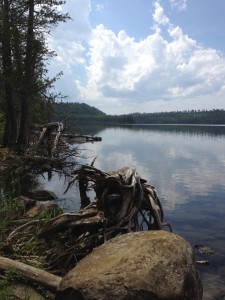Archive for St. Edward’s University
Friday, November 16th, 2012
Foreign Invasion
Sometimes, going ‘global’ isn’t always a good thing. In fact, globalization wreaks havoc on the natural community.
Recently, a land manager told me that some places in Austin look more like China than Central Texas.
The sad thing is, he’s right. There’s a hoard of invasive species overtaking the landscape in Austin, especially on public lands, and it’s a huge beast to tackle. Plants like Japanese privet, Chinaberry and Chinese privet are all native to Asia, but came here after people decided that they looked pretty in their yards. These plants are known as ornamentals, and people plant them because they look nice. They also thrive in Austin’s winterless and favorable climate.

This tree is probably the great-grandmother of all ligustrum trees within a mile radius or so. It’s huge. It’s hard to tell, but that tree is full of luscious berries. Birds love that stuff.
Click here to read more
Wednesday, November 7th, 2012
Wild Basin Wilderness Preserve
The university is working to increase academic involvement in and public awareness of Wild Basin Wilderness Preserve, a nature preserve managed by St. Edward’s University in west Austin. Part of the initiative included renovations to infrastructure and changing the name of the building at the preserve to Wild Basin Creative Research Center.
Click here to read more
Thursday, September 27th, 2012
A summer with the feds
Over the summer, my morning commute to the office was a quick paddle into the wilderness. Life jackets replaced seatbelts and wind conditions were more of a concern than traffic jams. Parallel parking along the lakeshore was a dream.
Ok, the term office is relative—in this case, the office is a million-plus acres of wilderness, known as the Boundary Waters Canoe Area Wilderness in northern Minnesota. There are more than 3,000 lakes in this area, which straddles the U.S.-Canadian border, and it’s just a hop-skip away from Lake Superior, the largest freshwater lake in the world. Needless to say, the landscape is enchantingly beautiful.

Duncan Lake in the Boundary Waters Canoe Area Wilderness, just a few miles from the Canadian border.
Not to mention that it is nearly impossible to travel without a canoe in the Boundary Waters—which is what makes this area so unique. And this summer, I called this place both my office and my home.
As a student worker for the U.S. Forest Service, the government agency that manages the Boundary Waters, I work alongside Wilderness Rangers in the Superior National Forest. You could say I was a Wilderness Ranger-in-training, no big deal.
The Boundary Waters is a protected wilderness area that lies within the forest, and it’s also the most visited wilderness in the country. That means there are over 200,000 visitors each year—most of them come in the summer, and nearly all of them paddle in via canoe to camp, fish and enjoy the mysterious allure of the Boundary Waters.
Click here to read more
